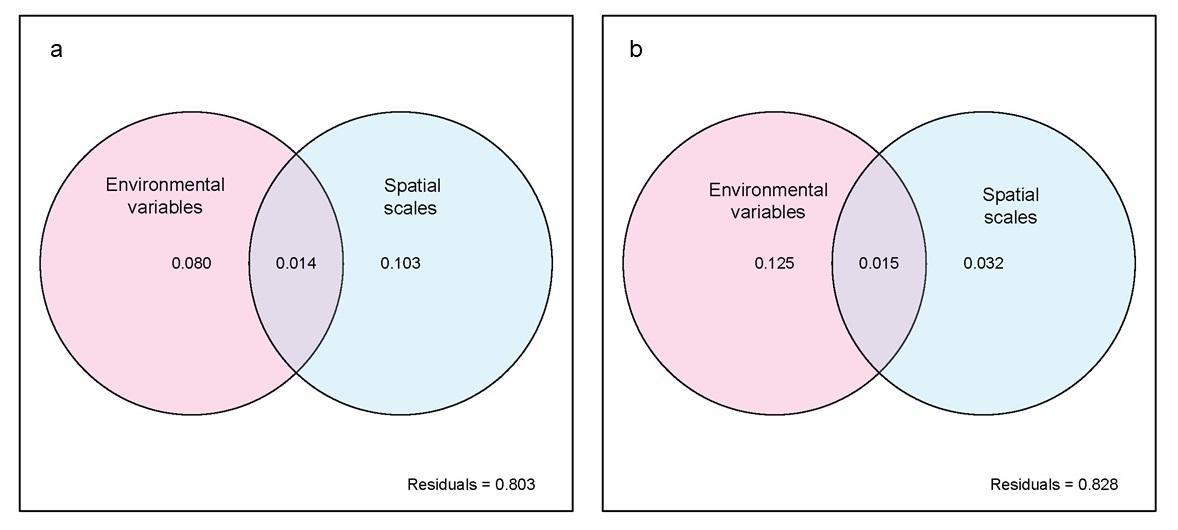
Denitrification, considered to be a facultative anaerobic process and mediated by a range of microbes, plays a critical role in the nitrogen (N) balance in terrestrial ecosystems, especially in the wetland ecosystem where excess N input could lead to deterioration of water quality and induce bloom.
The nirK and nirS genes (nir genes), encoding nitrite reductases catalysing the denitrification rate-limiting reaction of NO2– to NO, have been widely used as molecular markers to determine the diversity, abundance and species composition of denitrifying microbial communities. Therefore, the differentiae of nir-harboring denitrifying microbial communities could directly affect N biogeochemical cycle in wetland ecosystem. However, multifactors contribute to the variation nir-harboring denitrifying microbial communities, including local environments and dispersal limitation, especially in Tibetan Plateau characterized by cold and dry winters and cool-humid summers, and complex topography.
So, it is very important for us to unveil the relative contribution of environmental variation and geographical distance to nir community dissimilarity in aquatic habitats, especially in high-altitude and relatively undisturbed areas.
To disentangle the roles of environmental variation and spatial distance in explaining diversity and biogeography of soil denitrifying communities in remote Tibetan wetlands, a research team from Key Laboratory of Aquatic Botany and Watershed Ecology of the Wuhan Botanical Garden collected soils from 36 riverine, lacustrine and palustrine wetland sites on the remote Tibetan Plateau and characterized the soil denitrifier communities using high-throughput amplicon sequencing of the nirS and nirK genes.
No significant difference in nir community composition was found among the three kinds of wetlands. Soil moisture, carbon availability and soil temperature were the main determinants of diversity and abundance of the nirS-type denitrifier community, while water total organic carbon, soil NO3– and soil moisture were important in controlling nirK-type denitrifier diversity and abundance.
The nirS community composition was influenced by water electrical conductivity, soil temperature and water depth, while the nirK community composition was affected by soil electrical conductivity. Spatial distance explained more variation in the nirS community composition than in the nirK community composition.
The study highlights that environmental selection and spatial processes or dispersal limitation are important in explaining soil nir communities, especially nirS-type denitrifying communities, in relatively undisturbed plateau wetlands. Therefore, to predict the importance of environmental variables in structuring nir communities in plateau wetlands, water or soil conductivity should be a key concern.
This work was supported by the Youth Innovation Promotion Association of the Chinese Academy of Sciences and National Science and Technology Basic Special Project of China. It has been published in FEMS Microbiology Ecology with the title of “The roles of environmental variation and spatial distance in explaining diversity and biogeography of soil denitrifying communities in remote Tibetan wetlands”.

Variance partition analyses showing the relative importance of environmental and spatial factors in shaping nirS (a) and nirK (b) denitrifying communities (Image by WBG)

86-10-68597521 (day)
86-10-68597289 (night)

52 Sanlihe Rd., Xicheng District,
Beijing, China (100864)

